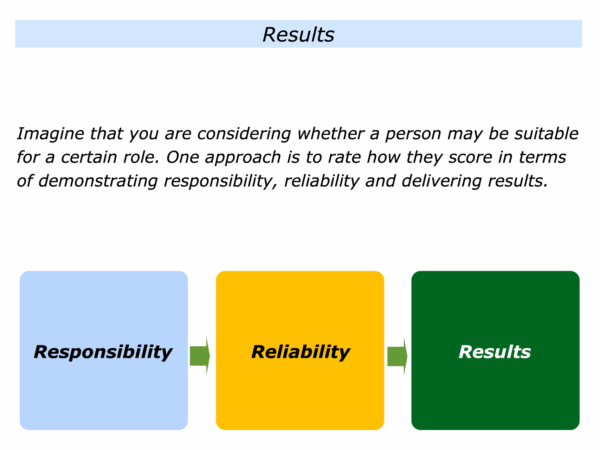
There are many ways to explore whether a person may be able to make a positive contribution to an organisation. One approach is to focus on how they rate in terms of responsibility, reliability and delivering results.
This is an approach you can use when interviewing a person for a particular role. Alternatively, you can use it when assessing a person who is already in a role. This involves focusing on the following themes.
Results
You may want to begin by clarifying the specific results that a person needs to deliver. Much will depend, of course, on the particular role.
The results they are expected to deliver will differ if they are working as a nurse, sales person, technical specialist, customer services director, leader or in another role.
One key point is worth underlining. It can be useful to describe the specific things they are to deliver in outcome terms. Let’s look at one example.
Imagine that a person is to lead a team. The outcomes you want them to deliver may include the following:
To make clear contracts with their key stakeholders about the specific outcomes to deliver in terms of their team’s profitability, product quality and people morale;
To lead a superb team that delivers the desired outcomes in terms of profitability, product quality and people morale;
To focus on continuous improvement and, when appropriate, implement ideas that maintain or improve the team’s performance in terms of profitability, product quality and people morale.
Imagine you are recruiting a nurse to work in a hospice. You will probably look for somebody who demonstrates compassion, medical competence and who can support their colleagues. They may also need to be resilient and able take care of their own wellbeing.
Let’s return to focusing on a person who may be applying for a role or you may be assessing the performance of a person who is already in a role. If you wish, try tackling the exercise on the theme of achievement.
First, describe the specific role. Second, describe the specific results – the specific outcomes – you would like a person in this role to deliver. Here is the exercise.
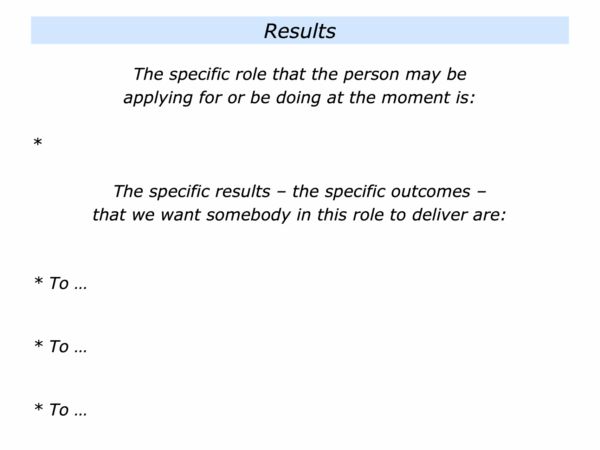
Let’s assume that you have clarified the results a person needs to deliver. You may then want to focus on the following themes.
Responsibility
Good organisations aim to employ people: a) who take responsibility; b) who want to make their best contribution towards helping the organisation to achieve success.
Such people have a positive attitude and a ‘Can Do,’ approach to their work. They are often proactive and aim to be professional when working with both colleagues and customers.
They are often dutiful and may, in some instances, stretch themselves too much. They may therefore sometimes need to prioritise things in order to do good quality work.
Such people take responsibility for managing their own feelings. They also like to encourage other people. There may be times, however, when they need to clarify what they can and can’t do to help other people.
Let’s return to a situation where you may be considering a person for a role. It can then be useful to focus on their behaviour – the things they do rather than just what they say – and explore the following questions.
On a scale 0-10, to what extent does the person demonstrate being proactive and taking responsibility?
What are the reasons why you may give this rating? If possible, try to give specific examples. What can the person do to maintain or improve the rating?
If you wish, try tackling the exercise on this theme. This invites you to complete the following sentences.
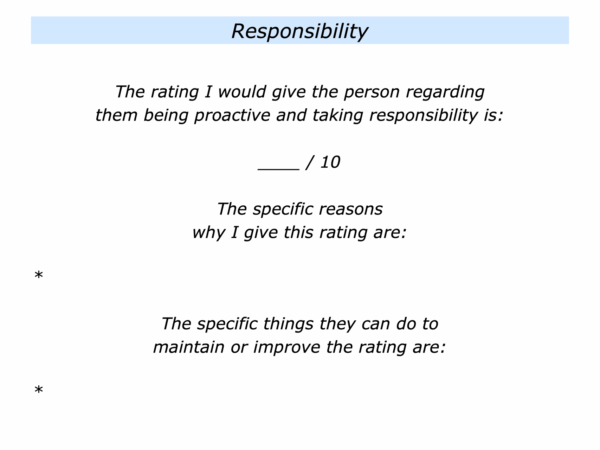
Reliability
Good organisations are made up of people who are reliable and do consistently good work. Such people often demonstrate the following characteristics.
They make clear contracts about the specific goals to be achieved when doing a piece of work.
They are relatively self-managing, apply themselves properly and take ownership for solving problems.
They demonstrate the required professional standards and deliver good quality work.
Let’s return to a situation where you may be considering a person for a role and focus on their reliability. If you wish, try tackling the exercise on this theme.
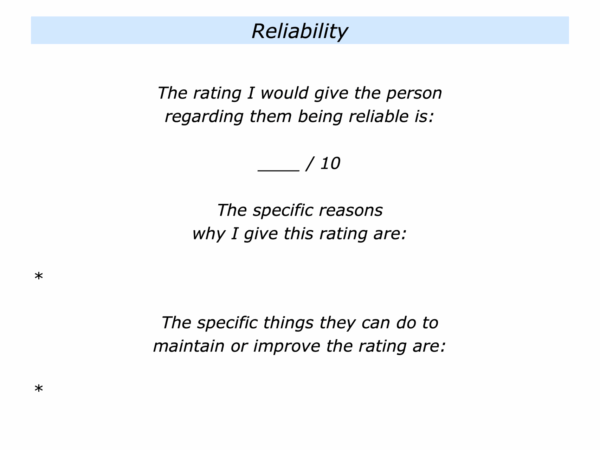
Results
Good organisations are made up of people who continue to deliver high professional standards and aim to deliver the agreed results. Such people often demonstrate the following characteristics.
They do superb work and, when appropriate, keep their key stakeholders informed about their progress towards achieving the agreed results.
They focus on continuous improvement and find solutions to challenges on the way towards achieving the agreed results.
They do their best to finish properly, fulfil the working contract and achieve the agreed results.
Let’s return to a situation where you may be considering a person for a role and focus on whether they deliver results. If you wish, try tackling the exercise on this theme.
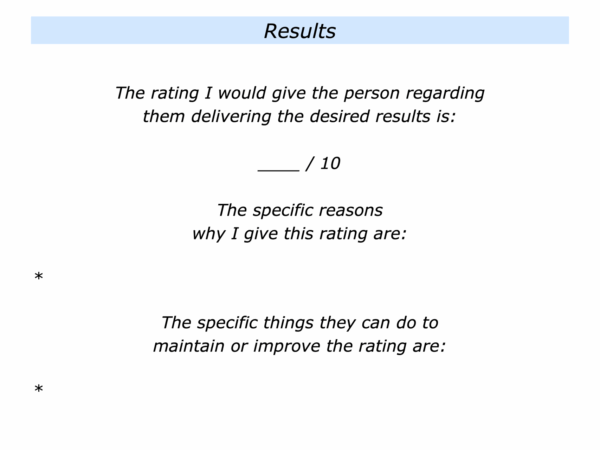
The Summary And Recommendations
Imagine that you have gone through the previous steps. If appropriate, you may then want to bring everything together. This can involve focusing on the following themes. You can aim:
To describe the ratings you have given under the headings of the person demonstrating responsibility, reliability and delivering results;
To describe the reasons for giving these ratings under each of the headings;
To summarise your recommendations regarding the person and the role together with any suggestions about the possible next steps.
You may believe, for example, that: a) the person will be able to deliver the results; b) the person may be able to this if they improve in certain areas or get support; c) the person is not suitable for the role.
Bearing in mind your recommendations, you may also offer suggestions regarding the person or the role. These could include some of the following. You could suggest it may be appropriate:
To offer the person the role, make clear contracts about the outcomes to achieve and set them up to succeed;
To explore whether it may be more appropriate to invite the person to consider another role in the organisation;
To continue the search for another person who may be more likely to succeed in the role.
Here is a framework you can use to summarise your findings. You can then give your recommendations regarding the likelihood of them delivering the desired results in the role. It also provides space for you making suggestions regarding the possible next steps.
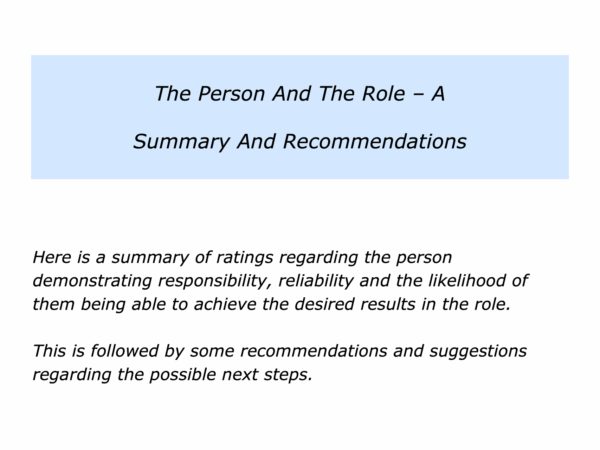
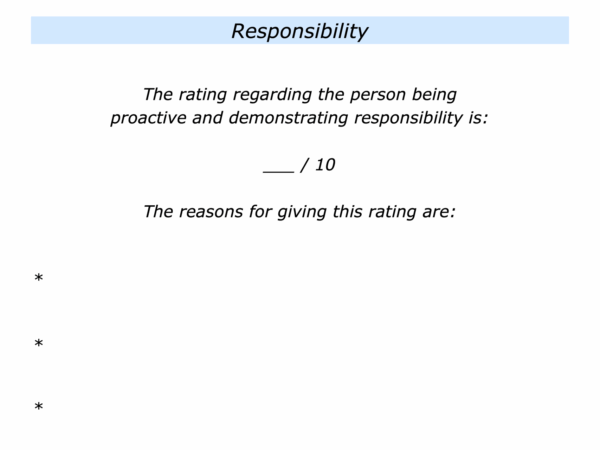
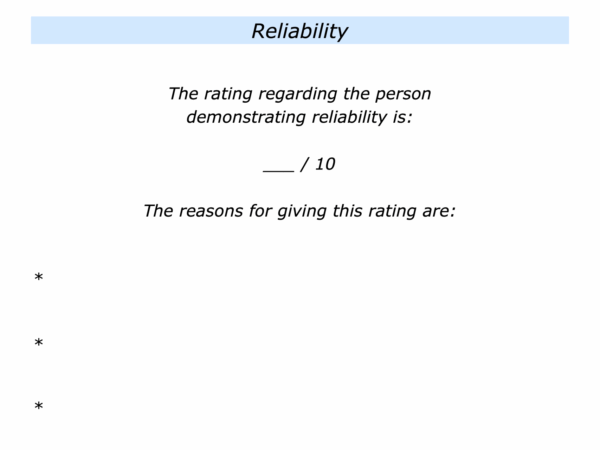
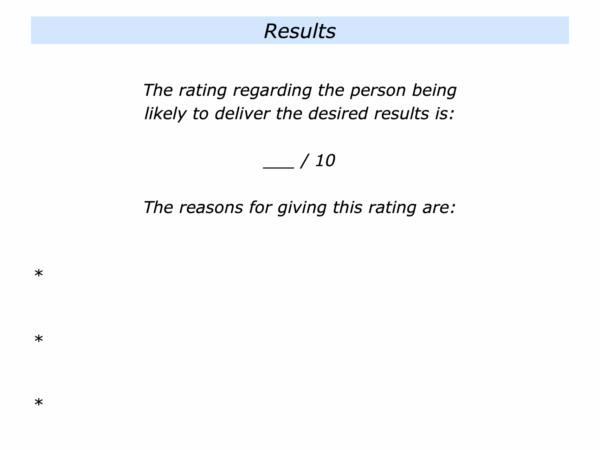
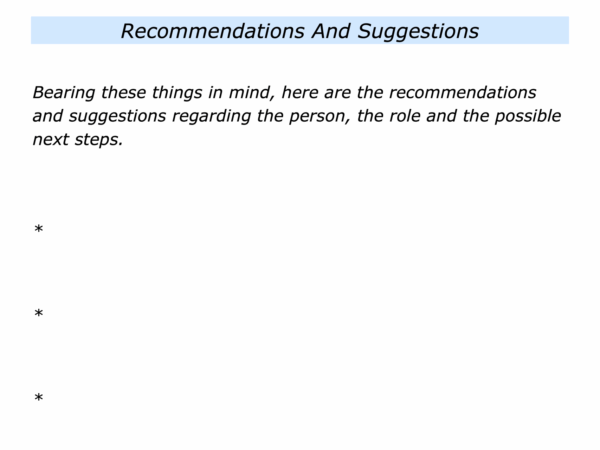


Leave a Reply